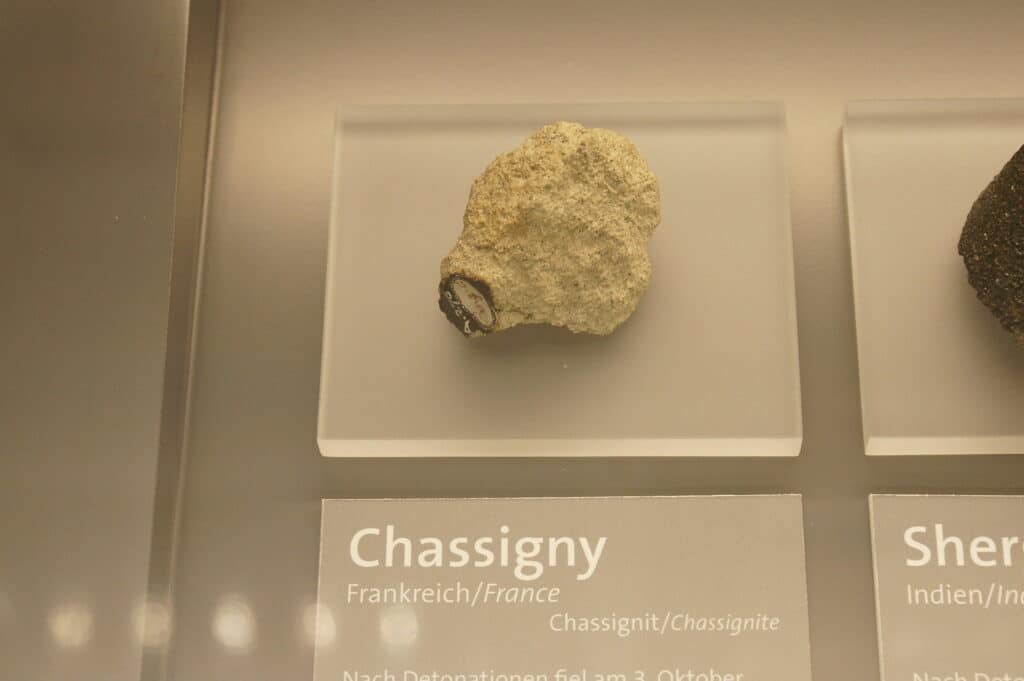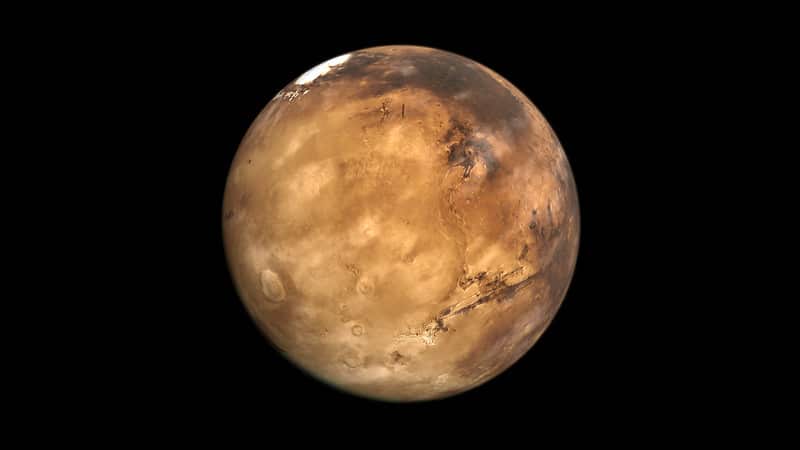Data from a Martian meteorite suggests that collisions with rocky objects provided the Red Planet with volatile elements during its inception, according to a pair of planetary scientists. Their analysis questions the traditional understanding of how Mars formed.
Meteorites are pieces of celestial objects, such as asteroids and comets, which broke off and smashed into Earth’s surface. Martian meteorites, as the name implies, were once a part of Mars before an impact blasted them from the Red Planet to Earth. Their chemical composition provides researchers insight into the evolution and material makeup of Mars.
The scientists behind the recent study analyzed the Chassigny meteorite, which came from the interior of Mars and landed in north-eastern France in 1815. Specifically, the team measured isotopes of an inert gas called krypton in the meteorite using a high-resolution mass spectrometer. This helped them determine where the material in the meteorite originated.
Isotopes are different types of a single element, containing the same number of protons but a different number of neutrons within their atomic nuclei. For instance, krypton isotopes all have 36 protons in their nucleus coupled with varying amounts of neutrons. Thus far, scientists have identified 32 isotopes of krypton.
“Because of their low abundance, krypton isotopes are challenging to measure,” explains Sandrine Péron, a postdoctoral scholar in the department of earth and planetary sciences at the University of California, Davis, who was involved in the study, in a statement.

The researchers found that the krypton isotopes in the meteorite correlated to those in a class of meteorites, called chondritic meteorites, in the interior of Mars. These meteorites formed when dust and grains clumped into asteroids and comets in the early solar system.
The results of the study suggest that chondritic meteorites delivered volatile elements like hydrogen, carbon, oxygen, and nitrogen to Mars earlier than previously thought. Traditional models of planet formation theorize that Mars first acquired these elements from a disc of gas and dust, called a solar nebula, when the solar system formed and then from chondritic meteorites. Their findings flipflop this model of planet formation, indicating that volatile elements in the Martian mantle largely came from the latter instead of the former.
“The Martian interior composition for krypton is nearly purely chondritic, but the atmosphere is solar,” Péron said. “It’s very distinct.”
To explain this distinction, the team suggests that elements in the Martian atmosphere originated from the solar nebula. They then got trapped on Mars, possibly underground or in the polar ice caps prior to the nebula dissipating and blowing away the ancient atmosphere.
“However, that would require Mars to have been cold in the immediate aftermath of its accretion,” says Sujoy Mukhopadhyay, a planetary scientist who also contributed to the study, in a statement. “While our study clearly points to the chondritic gases in the Martian interior, it also raises some interesting questions about the origin and composition of Mars’ early atmosphere.”
The study is published in the journal Science.












